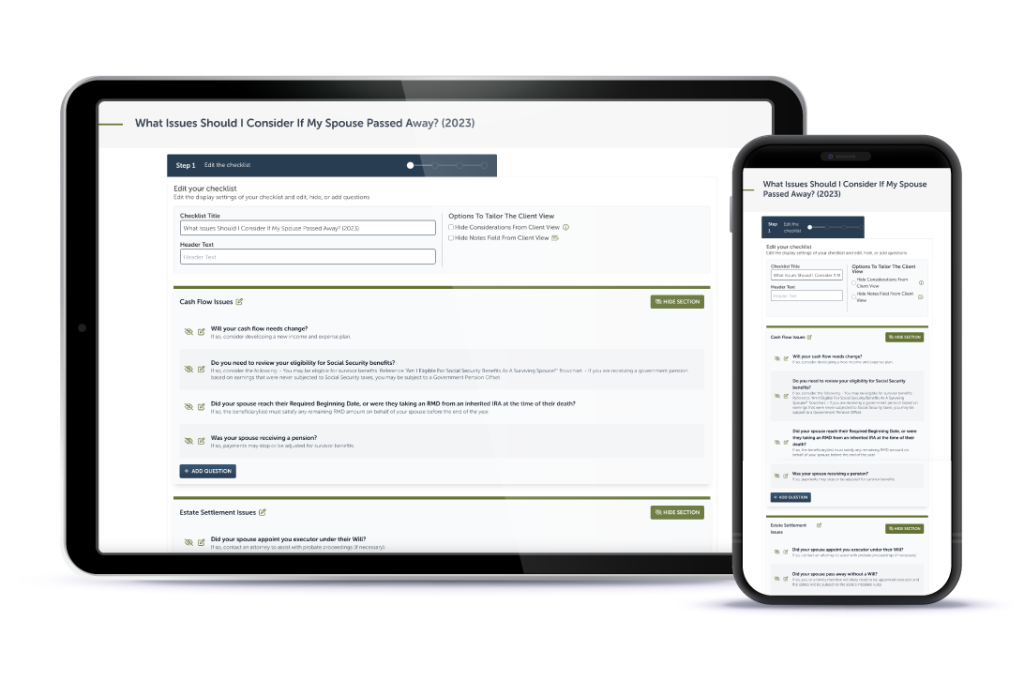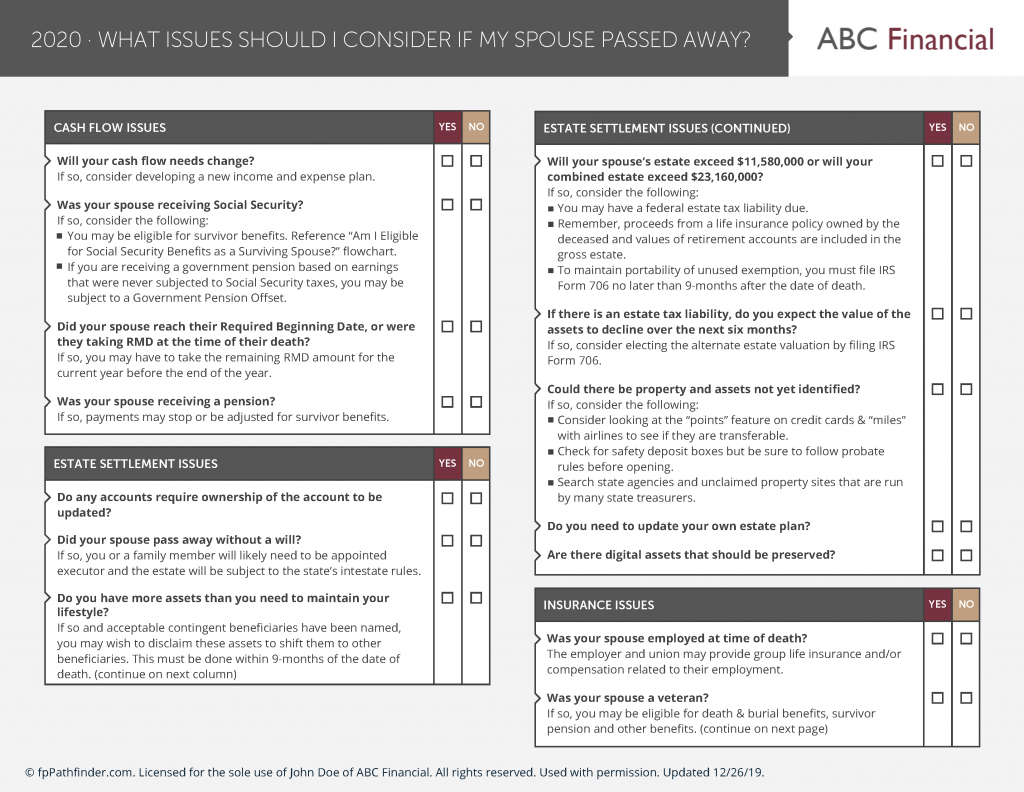If you work as a team with other advisors, checklists may offer an appealing solution that can help you add more structure to the advice you provide to your clients. This becomes a big obstacle facing advisory firms as they add more advisors to their team. There are a few scenarios presented by our members where they found the checklists and flowcharts to be crucial in delivering a great experience for their clients. Here are some of their initial frustrations that led advisors to thinking how fpPathfinder could help:
- To ensure no planning opportunities are missed, some senior level advisors remain closely connected to the client relationship because they have the necessary experience needed to identify the planning issues that can arise for their clients. A less experienced advisor may simply not know all the planning issues that could arise when talking with a client.
- The senior level advisor must be willing to invest a great deal of time to continually mentor and coach the inexperienced advisor. In some cases, it reduces the benefit of hiring (or working in a team approach) if the senior level advisor is not saving a lot of time.
- In another case, equally experienced advisors may approach planning opportunities differently. Imagine the conversation that may unfold when two clients of the same firm, but with different advisors, talk to each other and express their experience during their annual client review meeting. What if it was drastically different? What if one client had a thorough review and the other was very high level? It’s not producing a consistent experience.
As an advisory firm grows and adds more advisors, this disparity of advice can become increasingly common because each advisor brings their own unique background and experience to the table.
A possible solution involves the use of financial planning checklists to identify the planning issues. There are lots of checklists that could be used this way, such as the Annual Client Review Meeting Checklist or the What Issues Should I Consider Before The End Of The Year? checklist.
We see a few ways that checklists are being used by teams to ensure a continuity of service:
- Advisors in the team agree to utilize a specific planning checklist for client meetings. Afterwards, the advisor can document the conversation in their CRM and begin the process of addressing the possible planning issues. This can be an effective way of ensuring that less experienced advisors are asking the right questions.
- Some teams operate in conjunction with some advisors acting as relationship managers and other advisors (or perhaps paraplanners) actually conducting the analysis. In these cases, the advisors conducting the analysis can ask the relationship manager to run through certain checklists to make sure that the information is being captured. This will save some of the back and forth that occurs in the data gathering process.
- Teams are utilizing the resources as training materials for new advisors. Some advisors carve out dedicated time to teach inexperienced advisors about the issues to be mindful of during certain life events. In these cases, they use a resource as an outline for their conversation. In other cases, the more experienced advisor can hand out checklists or flowcharts to help answer a planning question that the inexperienced advisor has.
- For premier members, checklist notes can be logged in the contact record of the CRM. Possible planning opportunities can easily be assigned to other members on the team to handle (which frees up the advisor and ensures nothing is missed). This works especially well for a lead advisor to delegate research to a paraplanner.



